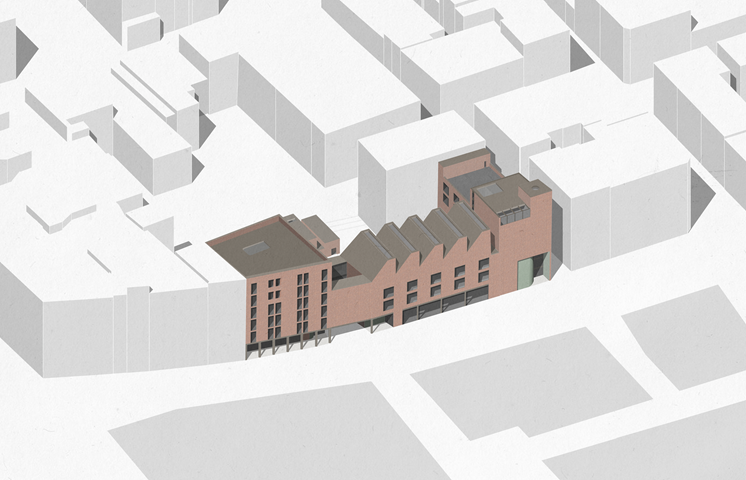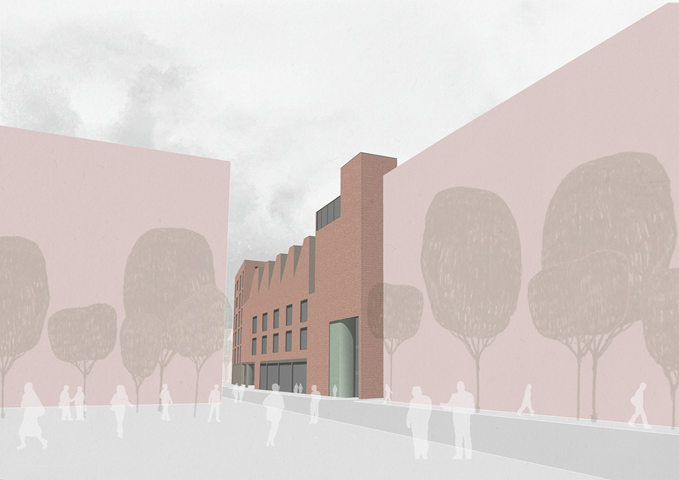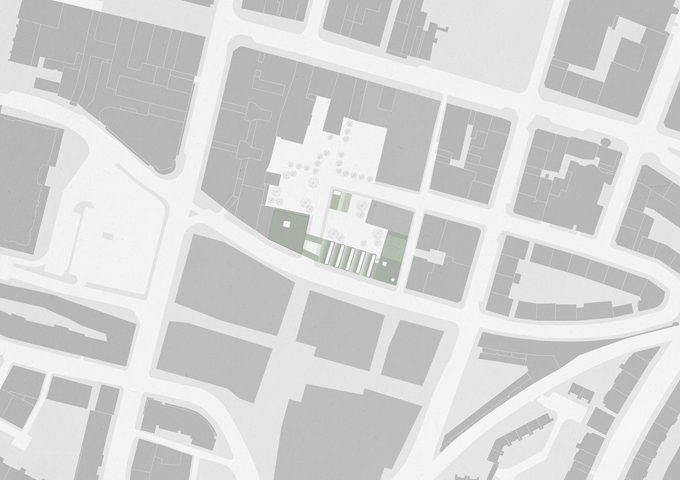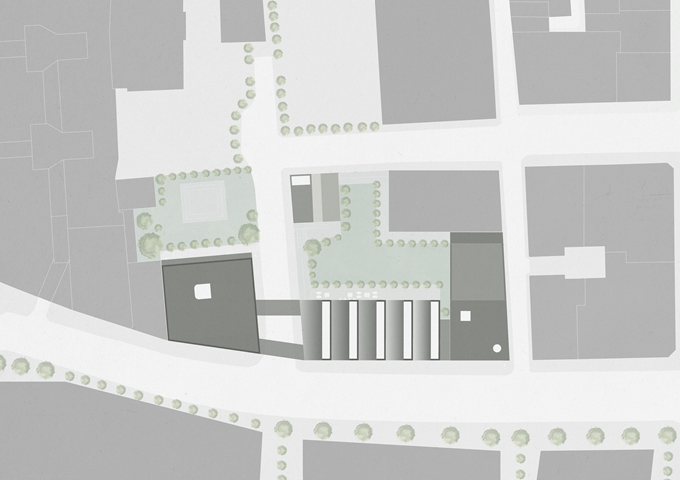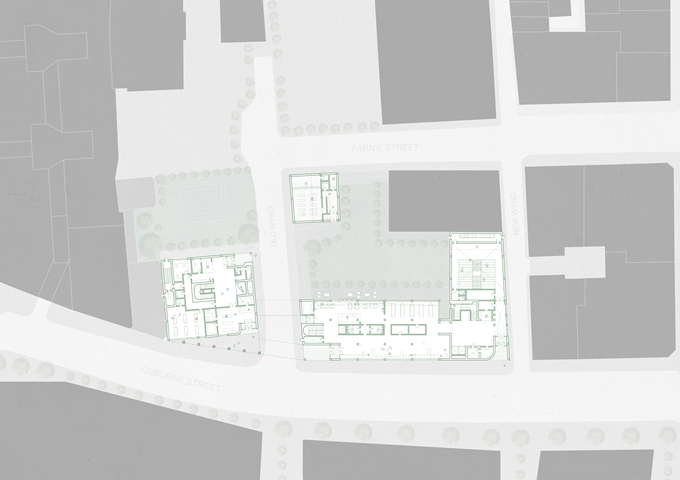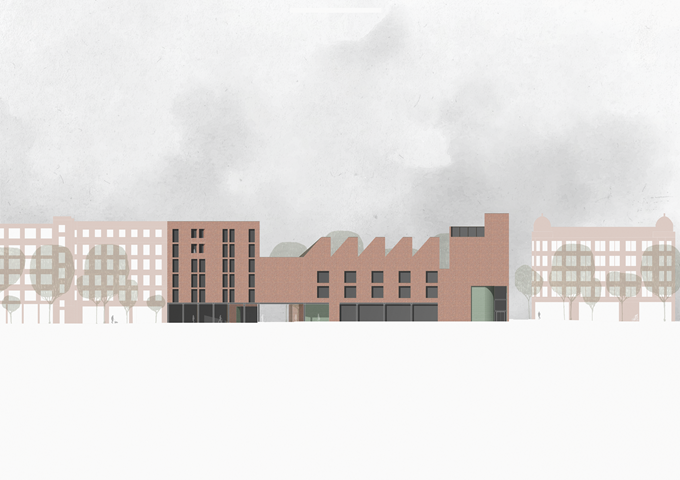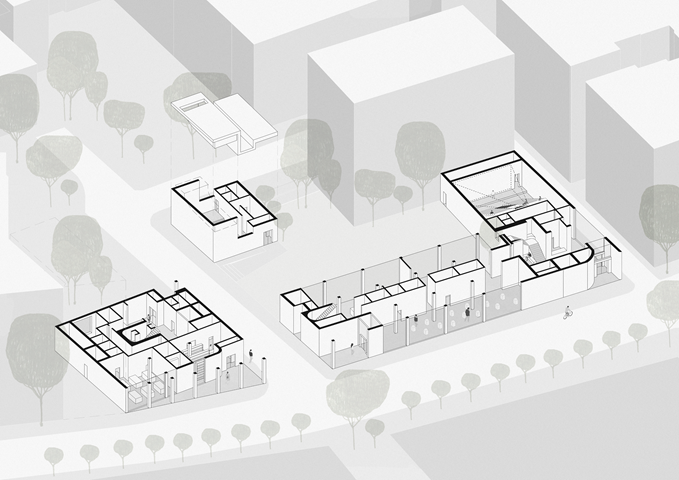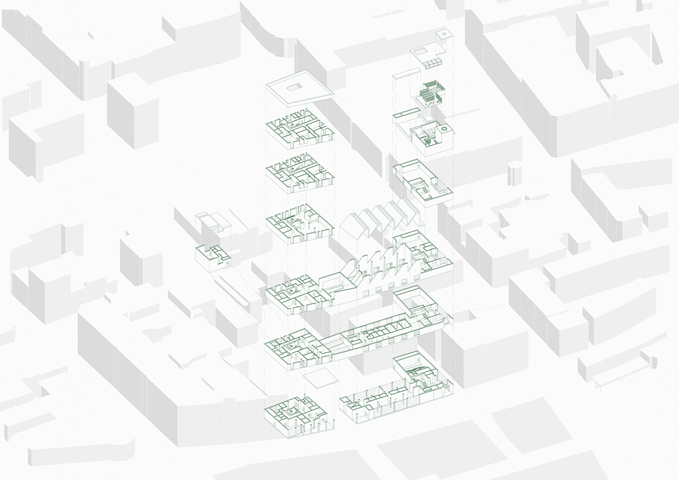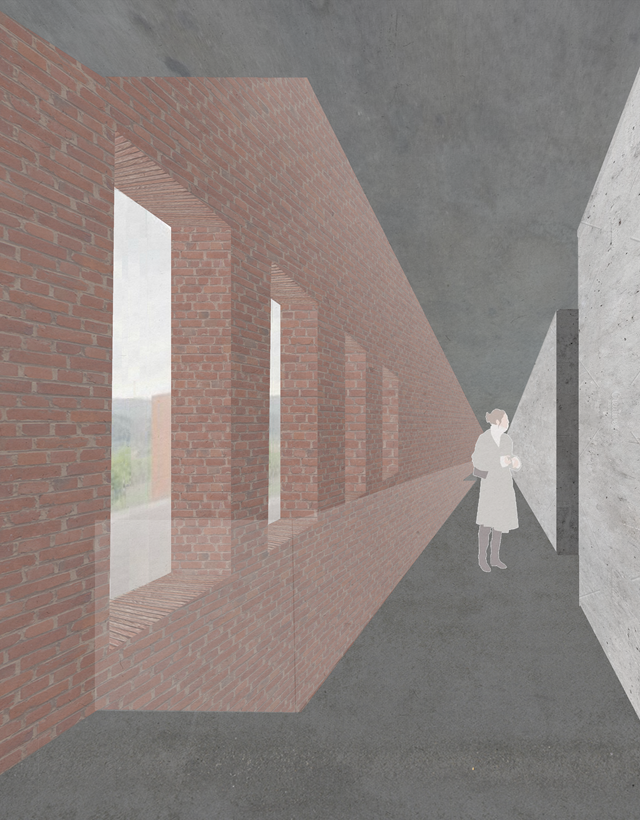A New Typology
A place for help to overcome drug addiction
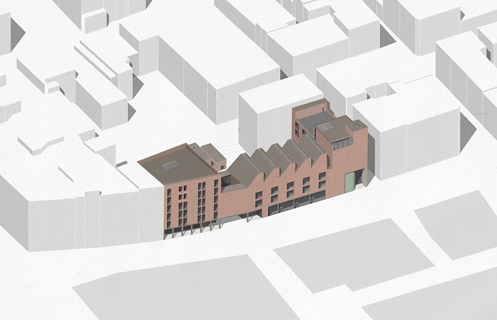
This design aims to provide a place of safety and comfort to those in need of help on their journey to recovering from drug addiction. This design focuses on the idea of removing the stigma that surrounds drug addiction. As this is a large civic building in the City Centre of Glasgow, it was imperative that the site faced the city and was not hidden away, to create a civic presence and to highlight that people are encouraged to seek help when battling with addiction. It is no secret that Glasgow has a history of addiction, therefore this typology is vital to keeping the city healthy.
In order to create a health centre unlike a typical clinical health centre, I looked into salutogenic design. Salutogenesis is a medical approach focussing on factors that support human health and well-being, rather than on factors that cause disease. The ‘salutogenic model’ is concerned with the relationship between health, stress, and coping.
Through intensive research, I decided my design would need to incorporate the health centre as well as a social and community centre as this is the way in which people recover from addiction. It is not just about the drug and whether or not it is in their system, it is about how the individual can live without the drug. Therefore this design acts as a reform/rehabilitation centre as well as a health centre. The design is split into two sides to incorporate a pends, typical of the context allowing movement through the building. On one side is the health services and residential spaces, which follows a more formal frontage to the city. The community centre side, which encapsulates the cafe, gallery, lecture hall, social services, workshop, gym and library spaces, follows a less formal form, to create inviting spaces for the individual to make their journey through. An emphasis has been placed on circulation within the design. With the idea being that the individual moves upwards in their journey. The staircases are special moments for each person who walks them.
The design wants to encourage conversation and make the individual feel comfortable when beginning their recovery. This is why the design features an abundance of entrances, with a mix of formal and informal spaces, to allow the person to enter the building, and in turn the steps to recovery, without feeling like they are entering the typical hostile clinic. They can chat to a member of staff in a variety of ways whether it be in the cafe over a coffee or through the drop-in spaces. There are two reception desks. The health centre entrance faces inward to the courtyard to give privacy to the patients. The public entrance of the community centre is situated on the corner of the design facing the city with a tower element above which acts as a beacon.
This design highlights that the journey to recovery is not straightforward and is unique to each individual person.
